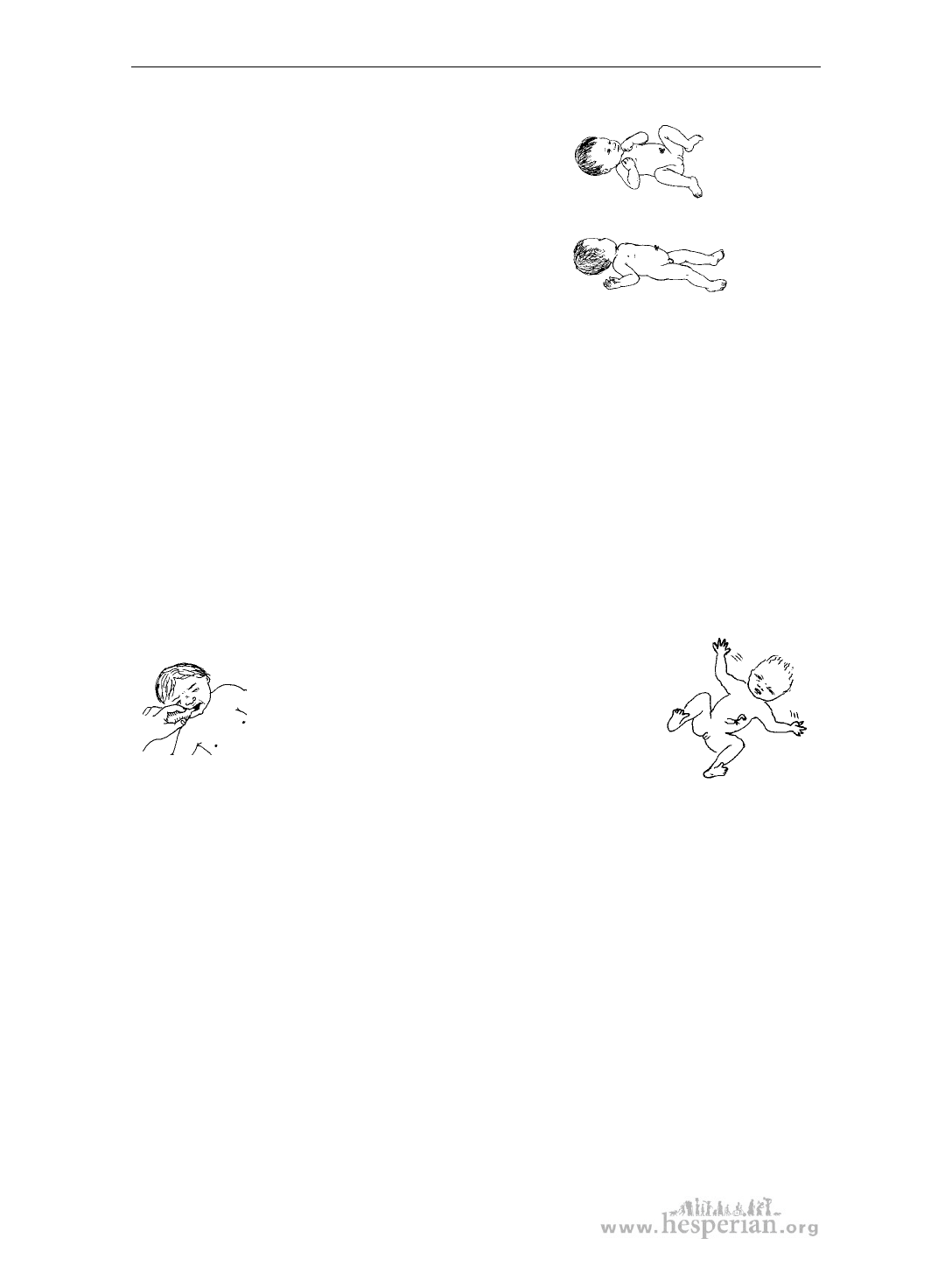
Chapter 13: The birth of the placenta – stage 3 of labor
Muscle tone
A baby who holds his arms and legs tight and close
to his body, and his elbows and knees bent, has
strong and healthy muscles, or good muscle tone.
A limp baby has weak muscle tone. His arms and
legs are loose and open. Some babies are born limp
if they did not get enough oxygen before they were
born. But a healthy baby should gain strength in
his arms and legs within a few minutes.
This baby has
good muscle
tone.
This baby
is limp.
The longer the arms and legs stay limp, the more likely it is that the baby is
in trouble. A limp baby will not breathe well. Make sure the baby is completely
dry, and place the baby skin to skin on the mother's belly to stay warm. If the baby
is just a little limp, try rubbing his back and talking to him. This may help the
baby wake up and try harder to breathe. If the baby is very limp, especially after the
first minute, suction or wipe out his mouth and nose. He may need oxygen as well.
Reflexes
Reflexes are the body’s natural reactions. For example, when you fall down, you
put your hands out to catch yourself — without even thinking about it. Or, when
an insect flies at your eye, you blink. Strong reflexes are a sign that the brain and
nerves are working well.
At birth, a healthy baby should have these reflexes:
• G rimace. The baby should make a face if you
suction his mouth and nose.
grimace
• M oro reflex. If the baby is moved suddenly
or hears a loud noise, he stiffly flings his
arms wide and opens his hands.
• S neeze. A healthy baby will sneeze when
there is water or mucus in his nose.
Moro reflex:
arms open wide
If the baby does not have any of these reflexes but he is breathing and his
heartbeat is more than 100 beats in a minute, get medical advice.
Color
Most babies are blue or even purple when they are born, but they quickly become
a more normal color in 1 or 2 minutes.
Babies who have darker skin do not look as blue as babies with lighter skin.
Look at a dark-skinned baby’s hands and feet to see if they are bluish. All babies
can look dusky or pale if they are not getting enough air in their lungs.
B aby is v e ry pale o r stay s blue afte r the fi rst fe w minute s
It can be OK for a baby’s hands or feet to stay a little blue for many hours. But it is
not normal for a baby’s body to stay pale or blue for more than 5 minutes.
Most of the time, babies stay pale or blue because they are not breathing well.
244
A Book for Midwives (2010)